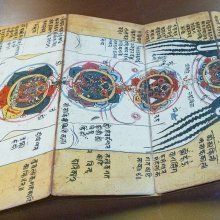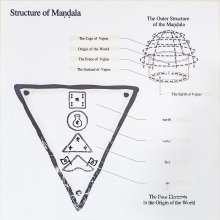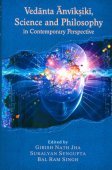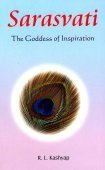Consciousness: 1 definition
Introduction:
Consciousness means something in Jainism, Prakrit. If you want to know the exact meaning, history, etymology or English translation of this term then check out the descriptions on this page. Add your comment or reference to a book if you want to contribute to this summary article.
Images (photo gallery)
In Jainism
General definition (in Jainism)
Source: archive.org: TrisastisalakapurusacaritraConsciousness is present in one’s own body and in other bodies, according to chapter 1.1 [ādīśvara-caritra] of Hemacandra’s 11th century Triṣaṣṭiśalākāpuruṣacaritra: an ancient Sanskrit epic poem narrating the history and legends of sixty-three illustrious persons in Jainism.
Accordingly, as Svayambuddha refuted Materialism in the presence of king Mahābala (i.e., previous incarnation of Ṛṣabha):—
“It is deduced from the perception of action always accompanied by intelligence that consciousness is present in (one’s own) body and in other bodies. Whatever creature dies, he is born again. So there is undoubtedly another world of consciousness. One and the same consciousness passes from birth to another birth, just as from childhood to youth and from youth to maturity. For without the continued habits of former consciousness, how can a child, just born, untaught, direct its mouth to the breast? How can a conscious being be produced from unconscious elements? For in this world the result is seen to be similar to the cause. Is a conscious being derived from elements singly or all together?”.

Jainism is an Indian religion of Dharma whose doctrine revolves around harmlessness (ahimsa) towards every living being. The two major branches (Digambara and Svetambara) of Jainism stimulate self-control (or, shramana, ‘self-reliance’) and spiritual development through a path of peace for the soul to progess to the ultimate goal.
See also (Relevant definitions)
Ends with: Ahetuka Citta, Boundless Consciousness, Clarity Of Consciousness, Death Consciousness, Deluded Consciousness, Eye Consciousness, Functional Consciousness, Functions Of Consciousness, Greedy Consciousness, Hate Rooted Consciousness, Inoperative Consciousness, Lofty Consciousness, Receptive Consciousness, Registering Consciousness, Six Consciousness, Sobhana Citta.
Full-text (+2986): Caitanya, Citta, Samjna, Cetana, Labdhasamjna, Vijnana, Vinnana, Cit, Cidrupa, Nama, Cidananda, Cinmaya, Bodhamatra, Manovijnana, Pancavijnana, Kusala Citta, Adeshastha, Samveda, Hosha, Pratisamkhya.
Relevant text
Search found 415 books and stories containing Consciousness; (plurals include: Consciousnesses). You can also click to the full overview containing English textual excerpts. Below are direct links for the most relevant articles:
Visuddhimagga (the pah of purification) (by Ñāṇamoli Bhikkhu)
Comprehension of the Material < [Chapter XX - Purification by Knowledge and Vision of the Path and the Not-path]
(3) Penetration of Minds < [Chapter XIII - Other Direct-knowledges (abhiññā-niddesa)]
Absorption in the Cognitive Series < [Chapter IV - The Earth Kasiṇa (Pathavī-kasiṇa-niddesa)]
Introducing Buddhist Abhidhamma (by Kyaw Min, U)
Chapter 2 - Consciousness < [Part 1 - Abhidhamma]
Chapter 9 - Consciousness < [Book II]
Chapter 1 - Preliminaries < [Part 1 - Abhidhamma]
Buddha-nature (as Depicted in the Lankavatara-sutra) (by Nguyen Dac Sy)
1.1. System of Consciousnesses < [Chapter 4 - The Thought of Buddha-Nature in the Laṅkāvatārasūtra]
1.2. The Ālayavijñāna < [Chapter 4 - The Thought of Buddha-Nature in the Laṅkāvatārasūtra]
1. Gradual cultivation < [Chapter 5 - The Practice of Buddha-Nature in the Laṅkāvatārasūtra]
Maha Prajnaparamita Sastra (by Gelongma Karma Migme Chödrön)
1. The ātman is not an object of consciousness. < [Part 13 - Non-existence of the donor]
Part 3 - Explanation of the word ‘śrutam’ (śruta) < [Chapter II - Evam Mayā Śrutam Ekasmin Samaye]
2. Actions producing the thirty-two marks (dvātriṃśallakṣaṇa) < [Part 4 - The Bodhisattva in the Abhidharma system]
The Great Chariot (by Longchenpa)
Part 1b.1c - The occasion of awareness < [B. The extensive explanation of the nature of karma]
Part 1b.1e - What predominates in the three chief realms < [B. The extensive explanation of the nature of karma]
Part 1b.1j - How the cause of liberation is produced < [B. The extensive explanation of the nature of karma]
Guhyagarbha Tantra (with Commentary) (by Gyurme Dorje)
Text 4.19 (Commentary) < [Chapter 4 (text and commentary)]
Text 2.2 (Commentary) < [Chapter 2 (text and commentary)]
Text 11.3 (Commentary) < [Chapter 11 (Text and Commentary)]
Related products
(+17 more products available)







